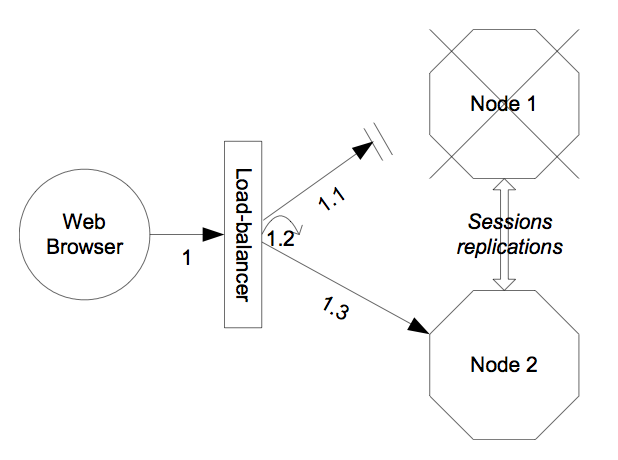Other JBoss services, in particular the HTTP-based services, do not require the client to download anything. The client (e.g., a web browser) sends in requests and receives responses directly over the wire according to certain communication protocols (e.g., the HTTP protocol). In this case, an external load balancer is required to process all requests and dispatch them to server nodes in the cluster. The client only needs to know about how to contact the load balancer; it has no knowledge of the JBoss AS instances behind the load balancer. The load balancer is logically part of the cluster, but we refer to it as “external” because it is not running in the same process as either the client or any of the JBoss AS instances. It can be implemented either in software or hardware. There are many vendors of hardware load balancers; the mod_jk Apache module is an excellent example of a software load balancer. An external load balancer implements its own mechanism for understanding the cluster configuration and provides its own load balancing and failover policies. The external load balancer clustering architecture is illustrated in Figure 16.3, “The external load balancer architecture for clustering”.
A potential problem with an external load balancer architecture is that the load balancer itself may be a single point of failure. It needs to be monitored closely to ensure high availability of the entire cluster's services.
